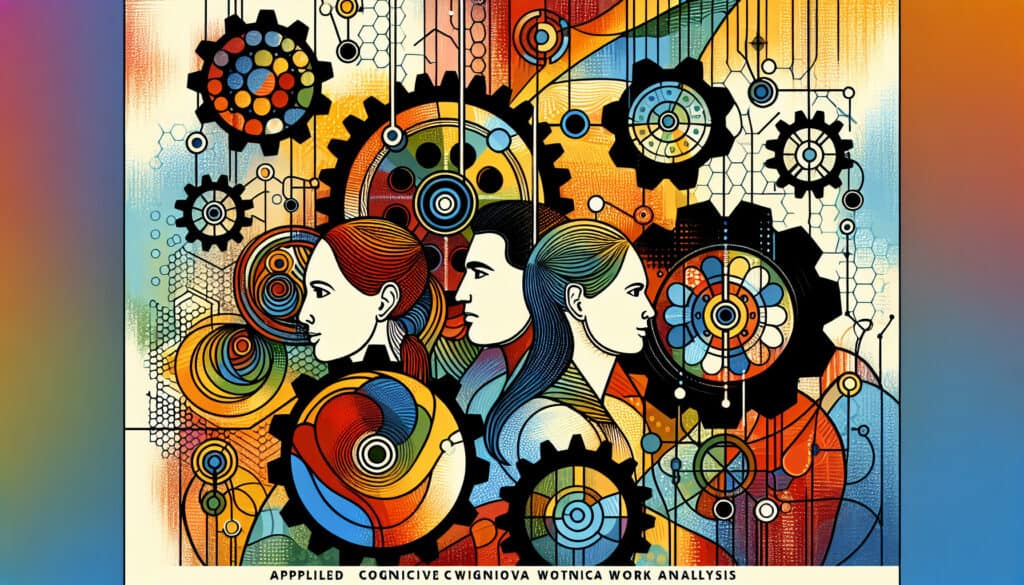A إطار العمل for analyzing complex socio-technical systems to understand how work is performed.
- المنهجيات: الهندسة, تصميم المنتج, إدارة المشاريع
Applied Cognitive Work Analysis (ACWA)

Applied Cognitive Work Analysis (ACWA)
- الحوسبة الإدراكية, التحسين المستمر, التفكير التصميمي, بيئة العمل, العوامل البشرية, تصميم يركز على الإنسان, تحسين العمليات, إدارة المخاطر, لغة نمذجة النظم (SysML)
الهدف:
كيفية استخدامه:
- ACWA is a comprehensive work analysis method that combines elements of Cognitive Work Analysis (CWA) and other work analysis techniques. It is used to understand the constraints and affordances of a work system and to identify opportunities for improvement.
الإيجابيات
- Provides a holistic view of the work system, helps to identify the root causes of problems, and can be used to design more effective and resilient systems.
السلبيات
- Is a complex and time-consuming method, requires a high level of expertise to apply, and may not be suitable for all types of systems.
الفئات:
- الهندسة, بيئة العمل, حل المشكلات
الأفضل لـ
- Analyzing complex work systems to improve performance, safety, and resilience.
Applied Cognitive Work Analysis (ACWA) finds significant application across various industries, particularly in sectors such as aviation, healthcare, and manufacturing, where the intricacies of human interaction with technology and environment necessitate detailed analysis. This methodology can be especially beneficial during the design phase of new systems or processes, where understanding user needs and operational contexts is paramount. Participants typically include multidisciplinary teams comprising system designers, human factors engineers, domain experts, and end-users, facilitating a comprehensive examination of work tasks and user goals. For example, in healthcare, ACWA is employed to redesign workflows that improve patient safety and clinician efficiency, while in aviation, it aids in optimizing cockpit interface design to enhance pilot decision-making. The method assists in identifying latent issues within work systems, such as miscommunications or inefficiencies, allowing teams to propose targeted interventions. It integrates cognitive models with traditional work analysis techniques, creating a systematic approach to identifying and modeling the knowledge, skills, and mental processes required to complete tasks successfully in real work environments. Through workshops and collaborative sessions, ACWA promotes the alignment of organizational objectives with user-centric design, ensuring that the systems developed not only meet performance standards but also enhance user satisfaction and adaptability to unexpected challenges.
الخطوات الرئيسية لهذه المنهجية
- Define the work domain and its operational environment.
- Identify the work functions and corresponding tasks within the domain.
- Analyze the constraints imposed by the work environment and technologies.
- Map cognitive demands and the associated knowledge, skills, and strategies required.
- Evaluate the task interdependencies and their impacts on work performance.
- Identify gaps in current systems and areas for potential innovation.
- Design interventions that align with the identified constraints and opportunities.
- Iterate the design based on feedback from system stakeholders.
نصائح للمحترفين
- Integrate direct observation methods within the ACWA framework to capture tacit knowledge from practitioners in the work system, revealing hidden workflows and subtle interactions often overlooked.
- Utilize stakeholder workshops for collaborative exploration of work scenarios, which enhances the identification of constraints and affordances by incorporating diverse perspectives and experiences.
- Incorporate iterative prototyping of solutions based on ACWA findings, allowing for real-time feedback and adjustments that align with users' needs and operational realities.
لقراءة عدة منهجيات ومقارنتها, نوصي باستخدام
> مستودع المنهجيات الشامل <
مع أكثر من 400 منهجية أخرى.
نرحب بتعليقاتكم على هذه المنهجية أو المعلومات الإضافية على قسم التعليقات أدناه ↓، وكذلك أي أفكار أو روابط متعلقة بالهندسة.
منشورات ذات صلة
استبيانات الانزعاج العضلي الهيكلي
الاختبار متعدد المتغيرات (MVT)
تحليل الانحدار المتعدد
أنظمة التقاط الحركة
طريقة MoSCoW
اختبار متوسط المزاج